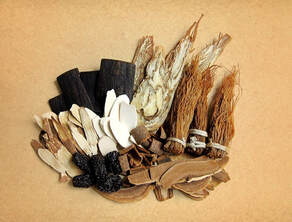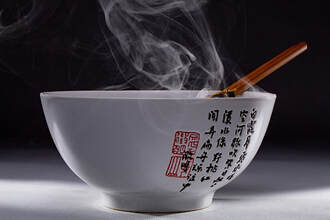How to tell if a document is written in Chinese, Japanese, or KoreanCHINESE VS JAPANESE VS KOREAN LANGUAGE Chinese, Japanese, and Korean all use characters, sometimes they use the same characters. While modern Japanese is a mix of kanji (Chinese characters) and the katakana and hiragana syllabaries, most of the time Korean is written in the Hangul alphabet, although I have seen older Korean documents written with Chinese characters. WHAT DOES CHINESE WRITING LOOK LIKE? Here are some clues to help you differentiate: Chinese characters are, in general, more complex. They look denser. A written Chinese character, whether traditional (Hong Kong, Taiwan) or simplified (China, Singapore), has more strokes than a Japanese or Korean character. WHAT DOES JAPANESE WRITING LOOK LIKE? Look for "no" (の). Look for dots(び). The Japanese language uses Chinese characters (kanji) and it uses two syllabaries (kana) of characters with only a few strokes. A Japanese document will contain multiple occurrences of the character “no” (の) which means “of” or denotes possession. So, glance through the document, do you see の scattered throughout? Then, it’s Japanese. Double dots also appear frequently, e.g., グ and ガ and ド. WHAT DOES KOREAN WRITING LOOK LIKE? I look for ovals. The Korean language has its own phonetic writing system, sometimes described as an alphabetic syllabary, and an oval shape appears frequently, for example, 여 and 우 and 으 and 어. You won’t see these oval shapes in Chinese. When you see a oval or circle shape in the Japanese language, it is a small circle パ. MORE EXAMPLES 敏捷的棕色狐狸跳過了懶狗 (traditional Chinese) 敏捷的棕色狐狸跳过了懒狗 (simplified Chinese) 빠른 갈색 여우는 게으른 개를 뛰어 넘는다 (Korean) 速い茶色のキツネは怠惰な犬を飛び越える (Japanese) WHAT ABOUT OTHER LANGUAGES AND OTHER WRITING SYSTEMS? จิ้งจอกสีน้ำตาลอย่างรวดเร็ว (Thai) cáo nâu nhanh (Vietnamese) хурдан бор үнэг (Mongolian) быстрая коричневая лиса (Russian) γρήγορη καστανή αλεπού (Greek) الثعلب البني السريع (Arabic) שועל חום מהיר (Hebrew) ፈጣን ቡናማ ቀበሮ (Amharic) Still have questions?
Write me at https://www.integrativetranslations.com/contact.html. I will look at your document and let you know.
0 Comments
In the chill of winter, we gravitate to warmth and light.ASTRAGALUS Originating in northeastern China, central Mongolia, and Manchuria, the root of the herbaceous perennial Astragalus membranaceus or 黃芪 (huangqi) is a staple of traditional Chinese medicine. Mild in strength, with a sweet and slightly warm nature and an affinity for the spleen and lungs, astragalus is used as a general tonic to improve endurance, immune resistance, and energy, and to promote blood flow to the surface. Astragalus is useful for viral infections and increases the action of interferon alpha-1. It tonifies the spleen, the qi, and the blood. It is indicated for energy deficiency, fatigue, prolapse of rectum, womb, or other organs, profuse sweating due to external “empty” ailments, stubborn abscesses, facial swelling, and diabetes. The use of astragalus root as a general tonic dates to the 28th century BCE and the mythical Chinese ruler Shennong, the legendary author of the first materia medica. Astragalus root has a long, cylindrical taproot, which is internally yellowish in color, but rootlets should be absent. The constituents of astragalus root include triterpenoid saponins, astragalosides I-VIII, astramembranins I and II, isoglavones including formononetin and kumatakenin, and polysaccharides known as astrogaloglucans. There is anecdotal but little clinical evidence that astragalus alone or in combination aids in the treatment of the common cold or impaired immunity. Clinical studies supported by data from over 1000 patients in China confirm the use of astragalus as an immunostimulant for use in colds and upper respiratory infections. It is also used prophylactically. In general, astragalus is well tolerated but should probably be avoided in autoimmune diseases. WINTER TONIC SOUP Traditionally, the roots of Astragalus membranaceus are added to soup before the cold season to prevent respiratory ailments. Astragalus is an adaptogen and increases qi. The recommendation is to eat astragalus soup daily for one to three months to build immunity for the winter. INGREDIENTS Root herbs astragalus, ginseng, eleuthero Six cups low-salt soup broth 2 tablespoons olive oil 2 cloves garlic 4 carrots 1 onion 1-2 pounds chicken (optional - for added immunity) 2 cups of chopped greens (spinach, chard, kale) 4 sprigs of parsley 2-3 sprigs of sage 6 slices of ginger root Step 1: Soak root herbs in large pot with soup broth while preparing Steps 2 and 3. Step 2: Mince garlic, chop carrots and onion. Sauté in olive oil over low heat until onions are translucent. Step 3: Add chicken to above and brown on both sides. Step 4: Add sautéed carrots, onions, and garlic, as well as chopped greens, sprigs of parsley and sage, slices of ginger, and chicken to soup broth. Step 5: Simmer soup 3-4 hours, then remove root herbs, ginger slices, and sprigs of parsley and sage. Step 6: Season to taste with salt and pepper or soy sauce/hot oil/sesame oil. Information in this blog is presented for educational purposes only. The use of herbal preparations is not recommended without seeking the advice of a healthcare provider. Substances in herbal preparations may interact with prescription drugs to eliminate therapeutic efficacy or induce toxicity. In theory, astragalus may enhance the activity of drugs for diabetes and hypertension. Avoid astragalus root if you already have cold, flu, or fever.
|
�
AuthorKerilyn Sappington is the founder of Integrative Translations, which specializes in the Chinese to English translation of topics in conventional and complementary medicine. Archives
August 2022
Tags
All
|





